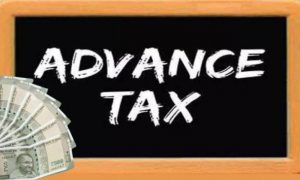Direct taxation, as we know it today, has been there in India since ancient times. An income tax return is a form that taxpayers fill out to provide details regarding their income.
Read More:- RBI Monetary Policy April 2023: Key Numbers You Can’t Miss To Know
Various income tax forms have been notified by the Income Tax department, such as ITR 1, ITR 2, ITR 3, ITR 4, ITR 5, ITR 6 & ITR 7 to date. The annual income tax return (ITR) must be filed by all individuals with taxable income and who meet other prescribed conditions.
Depending on the taxpayer’s income sources, the amount earned, and the category to which the taxpayer belongs, ITR forms may be applicable depending on these factors. In addition to considering the details of income, it is important to also keep in mind the various disclosure requirements prescribed from time to time when selecting the appropriate ITR form.
WHICH TAX RETURN TO FILE:
Every year, the Central Board of Direct Taxes (CBDT) notifies the ITR forms for the previous completed financial year. It is mandatory to file income tax returns (ITR) in India if any of the conditions mentioned below apply to you.
Read More:- Digital Transformation: Realising Fortunes At The Bottom of The Pyramid
ITR-1 OR SAHAJ
The ITR 1 form is required for individuals who qualify as ordinary residents and have a total income of up to Rs 50 lakh. In the case of income from salaries, one house property, income from other sources, including agricultural income up to Rs 5,000. It is also applicable to the income of a different person, such as a spouse or child, if they are clubbed together in the taxpayer’s hands.
ITR-2
Individuals and Hindu Undivided Families (HUFs) who do not make profits or gains from business or profession are eligible to fill out this form. Non-residents / Residents but Not Ordinarily Residents and Ordinarily Residents.
An individual with a total income of more than Rs 50 lakh, Director of a company, investment in unlisted equity shares, and income from the following sources – salaries, multiple houses, capital gains, and other sources, and holding assets outside of India and earning income from sources outside of India.
ITR-3
This form is for individuals and HUFs having income from profits and gains of business or profession.
ITR-4 SUGAM
This form is for individuals, HUFs, and firms (other than LLP) being a resident having total income upto Rs.50 lakhs and having income from business and profession which is computed under Section 44AD, 44ADA or 44AE of the Income Tax Act, 1961.
ITR-5
This form is for persons other than an Individual, HUF, Company, and individual filing Form ITR-7.
ITR-6
This form is for companies other than companies claiming exemption under Section 11 of the Income Tax Act, 1961.
Read More:- RBI Monetary Policy April 2023: Key Numbers You Can’t Miss To Know
ITR-7
This form is for persons, including companies, required to furnish returns under Sections 139(4A) or 139(4B) or 139(4C), or 139(4D) of the Income Tax Act, 1961 only.
Persons include companies that are charitable or religious trusts, political parties, scientific research associations, news agencies, hospitals, trade unions, universities, colleges, or other institutions such as NGOs or similar organizations.



































